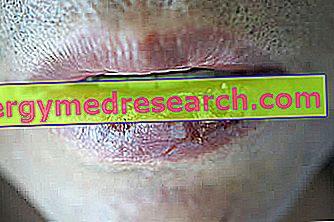
What is Parsabiv - Etelcalcetide and what is it used for?
Parsabiv is a medicine used to reduce parathyroid hormone levels in adults who have high levels of this hormone due to their long-term kidney disease (secondary hyperparathyroidism). Parathyroid hormone is produced by the parathyroid glands in the neck and regulates calcium and phosphate levels. High levels of parathyroid hormone can cause loss of calcium from bones, bone pain and fractures, as well as heart and circulatory problems.
Parsabiv is used in patients on hemodialysis (a technique to eliminate waste products from the blood using a blood filtering machine). It contains the active substance etelcalcetide.
How is Parsabiv - Etelcalcetide used?
Parsabiv is available as a solution for injection. Treatment is started at a dose of 5 mg three times a week and the dosage is subsequently adjusted according to the level of the parathyroid hormone or that of the patient's calcium. It is administered at the end of the hemodialysis session in the line that leads from the dialysis machine to the patient's vein. In some circumstances, it can be given by injection into a vein.
Parsabiv can only be obtained with a prescription. For more information, see the package leaflet.
How does Parsabiv - Etelcalcetide work?
When the cells of the parathyroid gland detect high blood levels of calcium, they reduce the amount of parathyroid hormone that enters the blood. The active substance in Parsabiv, etelcalcetide, is a calcium polymer. This means that it mimics the action of calcium on these cells and, thus, reduces the levels of parathyroid hormone in the blood. Reduced parathyroid hormone decreases blood calcium levels.
What benefit has Parsabiv - Etelcalcetide shown during the studies?
Parsabiv has been studied in three main studies involving 1 706 hemodialysis patients who had long-term renal disease and secondary hyperparathyroidism. The first two studies compared Parsabiv with a placebo (a dummy treatment) while the third study compared it with cinacalcet, another calcium-mimetic medicine. In all three studies, Parsabiv was given for 26 weeks. The main measure of effectiveness was a reduction in parathyroid hormone by more than 30% after at least 20 weeks of treatment.
In the first two studies, Parsabiv was effective in 75% (380 out of 509) of patients compared to 9% (46 of 514) of patients treated with placebo. In the third study, Parsabiv was at least as effective as cinacalcet: in 68% (232 of 340) of patients treated with Parsabiv compared to 58% (198 of 343) of patients treated with cinacalcet.
What are the risks associated with Parsabiv - Etelcalcetide?
The most common side effects with Parsabiv (which may affect more than 1 in 10 people) are low calcium levels in the blood, muscle spasms, diarrhea, nausea and vomiting.
Treatment with Parsabiv should not be started if the patient's blood calcium level is below the normal range. For the full list of all side effects and restrictions with Parsabiv, see the package leaflet.
Why has Parsabiv - Etelcalcetide been approved?
The Agency's Committee for Medicinal Products for Human Use (CHMP) decided that Parsabiv's benefits are greater than its risks and recommended that it be approved for use in the EU. The medicine has been found to be effective in reducing the parathyroid hormone in the blood in patients with kidney disease being treated with hemodialysis and its side effects are those expected for a calciomimetic substance.
What measures are being taken to ensure the safe and effective use of Parsabiv - Etelcalcetide?
Recommendations and precautions to be followed by healthcare professionals and patients for the safe and effective use of Parsabiv have been included in the summary of product characteristics and the package leaflet.
More information on Parsabiv - Etelcalcetide
For the full EPAR for Parsabiv, consult the Agency's website: ema.europa.eu/Find medicine / Human medicines / European public assessment reports. For more information about treatment with Parsabiv, read the package leaflet (also part of the EPAR) or contact your doctor or pharmacist.



